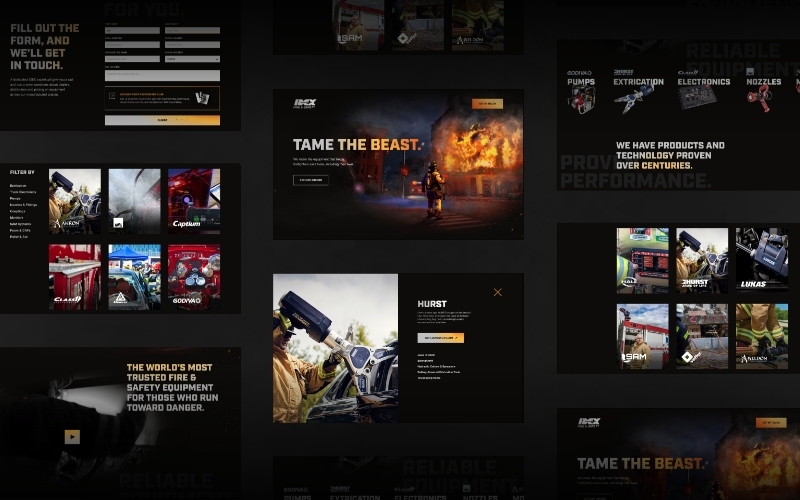Digital Platforms
USA Today recently reported that consumers spent 900 billion hours using apps in 2016. That's a new record and a 17 percent increase over the previous year. The jump supports earlier Forrester Research and Nielsen studies on mobile behavior.
But are apps really the new main course? Here are five things to consider.
1. Marketers must accept and embrace their customers’ need for instant gratification.
Today consumers expect to get what they want without having to wait, and technology makes it possible. Do you remember the screechy, scratchy sound of dial-up internet? Now you can browse products online, pay for your order and get a shipping confirmation more quickly than your old 56K modem made a connection.
But speed isn’t enough. Your customers want instant gratification, but they also want entertaining and engaging experiences. They want them whenever and wherever they are. And designers have to tailor in-app and website experiences to fit any time of day or use case. That means getting smarter about tactics and focus areas. It means maintaining quality but also doing it more quickly and effectively and for less money. Your “cool” app download won’t survive three days if it doesn’t give your users what they need.
2. Successful home and building sector brands replicate the in-store experience online.
Brick-and-mortar stores in multiple industries are closing their doors at an unprecedented rate. In fact, most consumers now turn to online shopping first. But consumers still want the best parts of an in-store experience, even if they don’t want to leave their home to get them. And like those brick-and-mortar stores and good, old-fashioned websites, apps have to provide a positive customer experience.
Successful brands offer online and in-store experiences that are complementary, not competitive. This is one of the main ideas behind beacon technology. Retail stores that use beacons can identify a shopper’s location and push promotional messaging, coupons and other information at exactly the right time. For example, if a customer is walking past a home improvement store and has the store’s app downloaded on their phone, the store can use beacon technology to send offers or something else that encourages them to go inside. They can also send personalized coupons, special checkout instructions, and anything else that might make the person more likely to buy that can of paint or hammer and nails.
In this environment, brands have to get smarter about the customer journey. And that means understanding your customer might not make all of the traditional stops in the traditional order. It means tailoring the experience to match each individual touch point. Because in a digital world, customers chart their own course.
3. Programmatic advertising gives marketers a new way to reach target audiences.
Programmatic advertising allows marketers to reach consumers at the optimal time of day – that moment when they’re at the ideal point in the journey to make a transactional move. Today we can learn about our targets and what influences or triggers them; programmatic gives us the ability to deliver those triggers.
Programmatic is making it easier for brands to get in front of the right people. The catch is that if you want your brand to stand out in the crowd, having great creative is more important than ever.
4. Good design and content will always outperform the best technology.
Even the best technology has to be paired with strong design. Good, clean design supports a positive user experience. And if customers have a pleasant experience, they’re more likely to initiate a transaction – and become repeat customers.
The current landscape also magnifies the importance of good content – content that tells a good story but also works across all platforms. Brands should create specific touch points and smart infrastructure before they roll out advertising designed to drive people to their business.
Facebook Canvas is a great example of a new platform that not only allows but also encourages strong design and excellent content while providing a great all-around experience. Its immersive, engaging, storytelling core supplements the strengths of one of the world’s most popular networks, and we’re already using it for some of our clients whose brands are more inspirational in nature.
On the flip side, technology for technology’s sake won’t move the needle. Bells and whistles can create buzz but little else – and that’s true for apps, websites and virtually any other form of marketing.
5. Your brand’s digital home should still be your priority.
Today technology allows us to reach people however we’d like. But if your core digital products – your websites, social platforms and CRM – aren’t as strong as they could be, the methods you’re using to drive traffic aren’t money well spent.
Apps have a place at the table, but should we treat them like the main course? I don’t think so. Instead, our team focuses on creating responsive experiences across all screens. We view each touch point on the customer journey as one part of a living, breathing digital system – not a one-off app, tool or device.
No matter what you’re selling or who you’re targeting, remember that the most effective marketing is tailored to a brand, its customers and what those customers want to achieve. And even the best, most popular apps can’t do all the heavy lifting.
You might also be interested in:
How Website Performance Affects Your Bottom Line
To Reach Your Customers Online, Embrace Progressive Enhancement


